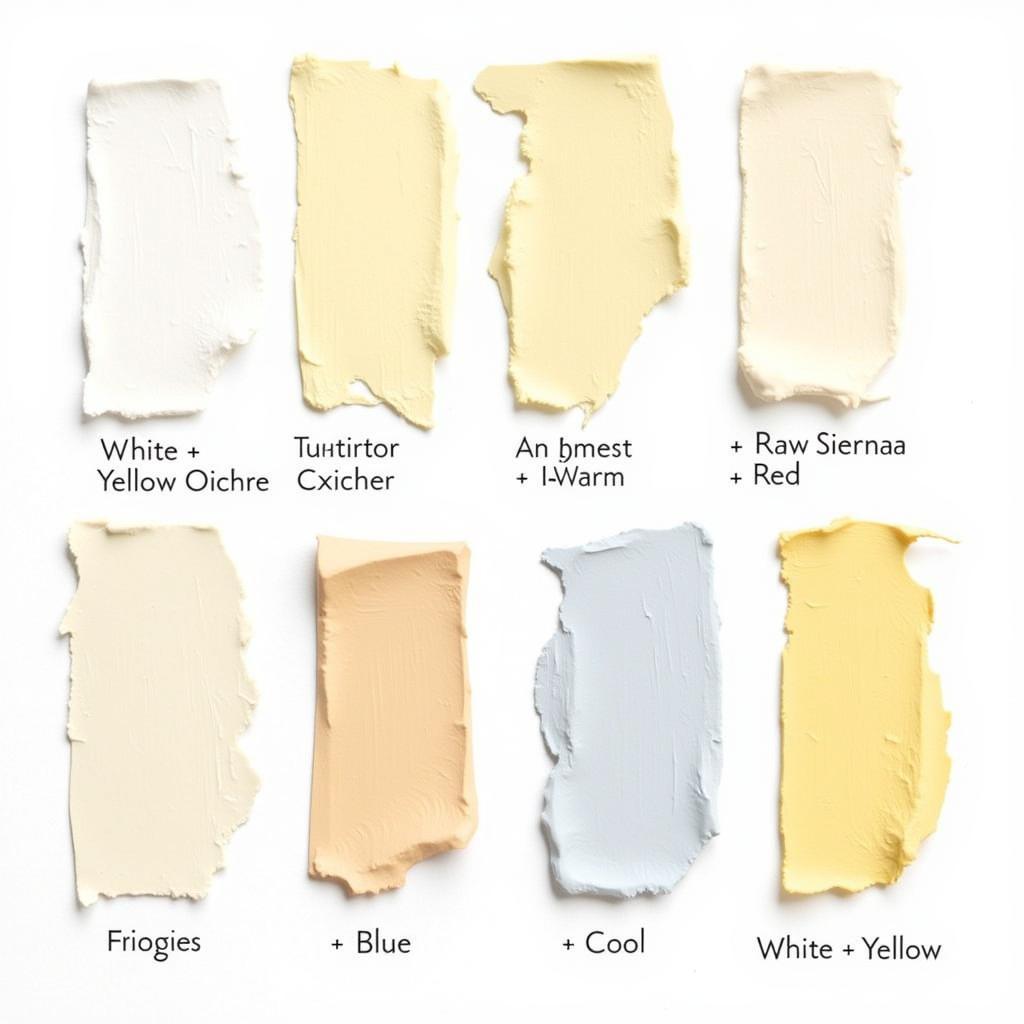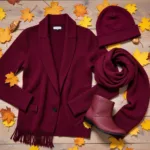Cream, a versatile and timeless color, adds a touch of warmth and elegance to any space. Whether you’re painting walls, mixing glazes, or working with other mediums, understanding how to mix a cream color opens up a world of possibilities. This guide will walk you through the process, providing you with the knowledge to achieve the perfect cream for your project. Let’s delve into the art of color mixing and uncover the secrets to creating this classic hue. If you’re unsure about which shade of blush complements your cream walls, you might find this article helpful: what color blush should i use.
Understanding the Basics of Cream
Cream isn’t a primary color; it’s a subtle blend of white and other hues. The key to achieving a beautiful cream lies in carefully balancing these colors. Before you start mixing, it’s essential to understand the undertones that can influence the final result. These undertones can range from warm yellows and oranges to cool blues and greens. Choosing the right undertone will determine the overall mood and feel of your cream color.
Mixing Cream with Paints
The most common way to mix cream is using white paint as a base. Start with a pure white and gradually add small amounts of another color to achieve the desired cream shade.
- For a warm cream: Incorporate touches of yellow ochre, raw sienna, or a tiny drop of red.
- For a cool cream: Introduce small amounts of blue, gray, or even a touch of green.
- For a neutral cream: Balance warm and cool tones by adding a combination of yellow and a hint of blue.
Remember, it’s always best to start with less and gradually add more color until you reach the desired shade. Mixing small test batches before applying the cream to your project is highly recommended. This allows you to fine-tune the color and ensures consistency. This is similar to the process of mixing a specific paint color, like cream. For a deeper dive into that, check out this guide on how to make cream color paint.
How Can I Make a Cream Color With Food Coloring?
While paint is the most common medium, you can also mix cream using food coloring. This is particularly useful for projects involving icing, frosting, or other edible creations. The principles are similar to mixing paint. Start with a white base and add small drops of yellow and red or brown food coloring until you achieve the desired cream shade.
Tips for Perfect Cream Color Mixing
- Use high-quality materials: The quality of your paints or food coloring will affect the final result. Investing in good materials will ensure a richer, more vibrant cream.
- Consistent lighting: Natural daylight is ideal for color mixing. If working under artificial light, be aware that it can alter the appearance of the colors.
- Keep track of your ratios: If you create a perfect cream shade, note down the proportions of each color used. This will allow you to recreate the same color in the future.
- Test on a small area: Before applying your cream mixture to the entire project, test it on a small, inconspicuous area. This will give you a preview of how the color will look in the final application. It’s important to understand what ash grey is if you’re trying to avoid a muddy cream. Check out what color is ash grey for more.
 Different Shades of Cream Paint Swatches
Different Shades of Cream Paint Swatches
“Cream is a chameleon color,” says renowned color consultant, Amelia Hues. “Its versatility allows it to adapt to various environments and design styles. Understanding the nuances of its undertones unlocks its true potential.”
Conclusion
Mixing a cream color is a simple yet rewarding process. By following the steps outlined in this guide, you can achieve the perfect cream for any project. Remember to experiment, test, and have fun with the process. Whether you’re painting a wall or frosting a cake, the perfect cream shade is within your reach. Now, go forth and create!
FAQ
-
What is the easiest way to mix a cream color? Start with white and add small amounts of yellow or brown.
-
Can I mix cream with acrylic paints? Yes, acrylic paints are excellent for mixing cream colors.
-
What is the difference between cream and off-white? Cream typically has warmer undertones, while off-white can have cooler undertones.
-
How can I lighten a cream color that’s too dark? Gradually add small amounts of white paint.
-
How can I make a cream color more vibrant? Use high-quality paints or food coloring.
-
How do I fix a cream color that’s too yellow? Add a tiny touch of blue or violet.
-
Can I mix cream using watercolors? Yes, the same principles apply to mixing cream with watercolors.
Grey-Green and Cream: A Harmonious Pairing
Are you considering using cream alongside a grey-green shade? Understanding the interplay of these colors can elevate your design. Discover the perfect grey-green partner for your cream palette in this insightful article: what is the best gray green paint color.
Dealing with Food Coloring Stains
While working with food coloring, accidents can happen. If you’ve gotten some on your skin, don’t worry! This guide provides effective solutions for removing food coloring stains: how to get food color off skin.
“Cream provides a beautiful foundation for any creative endeavor,” adds Amelia Hues. “Its timeless appeal transcends trends, making it a classic choice for generations to come.”
What are some other ways to adjust the undertone of cream? How do you mix cream using natural pigments?
Need assistance with your next color project? Contact us at Phone Number: 0373298888, Email: [email protected], or visit us at 86 Cau Giay, Hanoi. Our 24/7 customer support team is ready to help.
